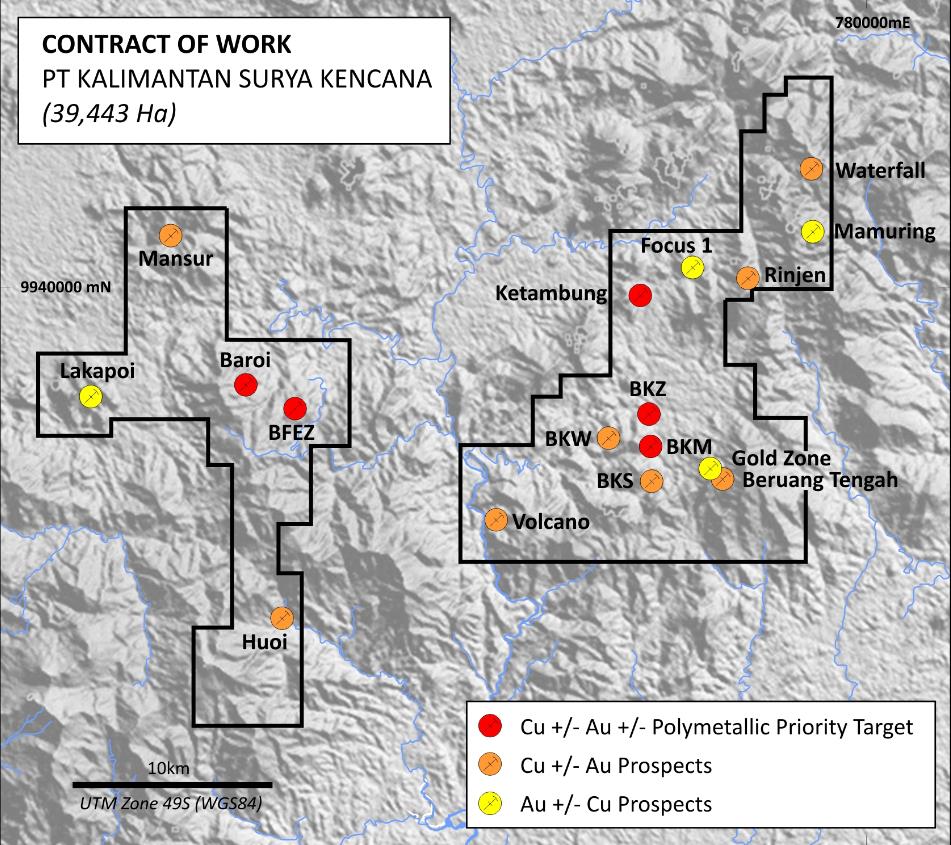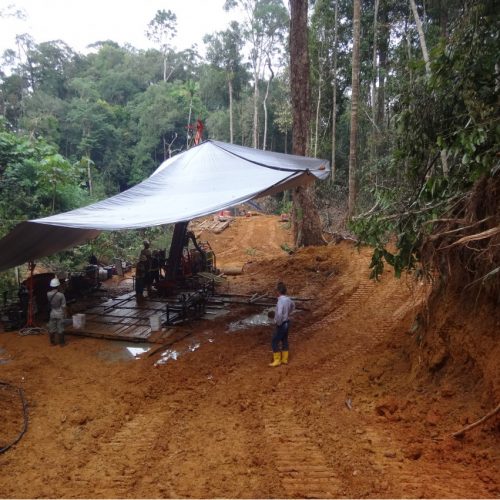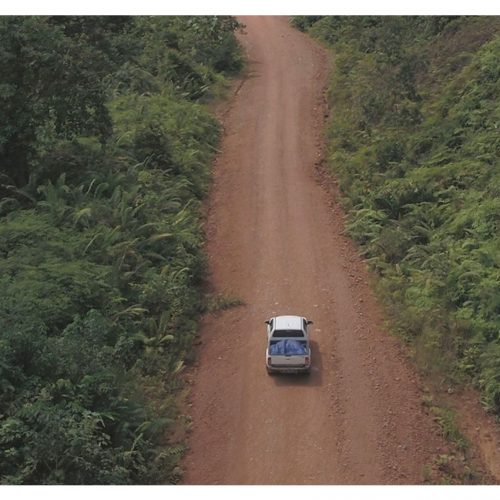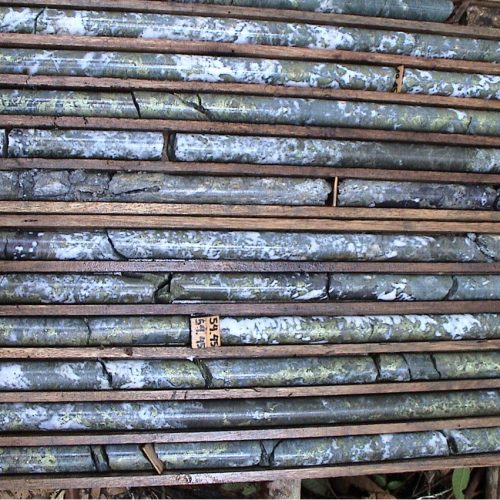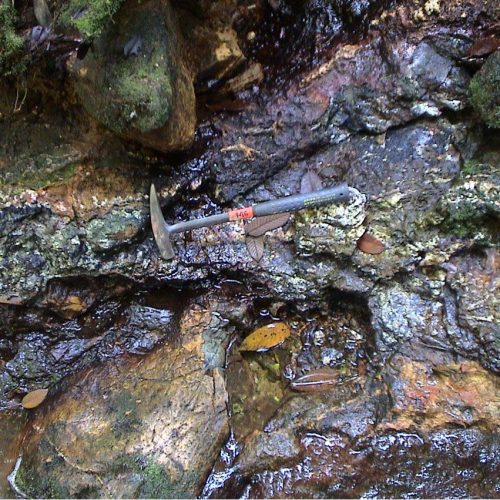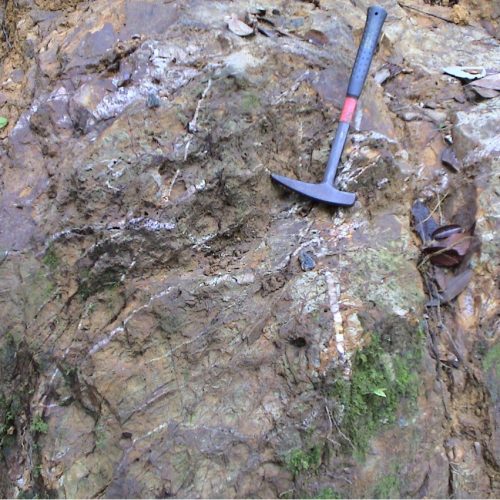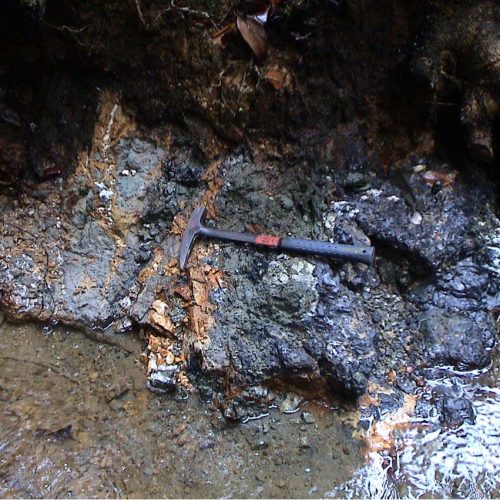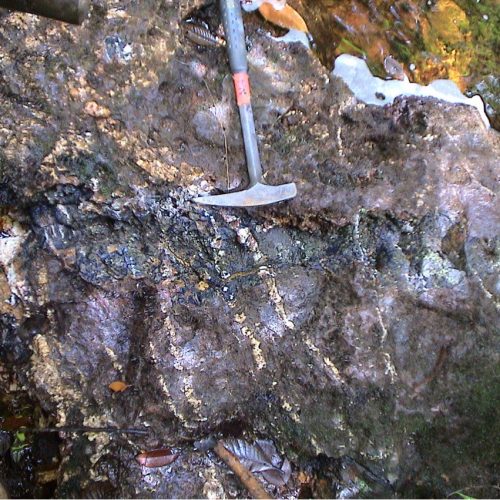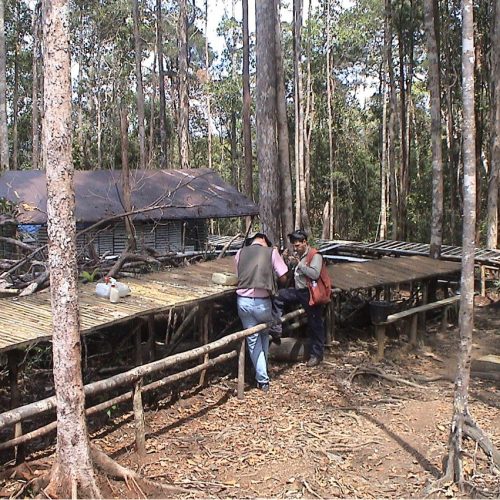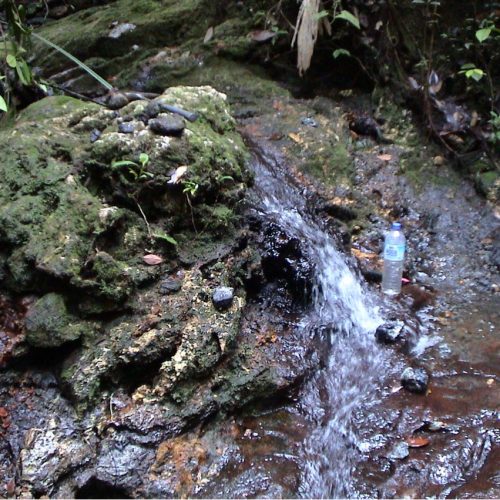The Baroi prospect is located in the southwest portion of the KSK CoW, 17km from BKM. It is a proven example of the district scale potential of the CoW. Historical work on the Baroi prospect has yielded the most extensive and intense mineralisation discovered in the more than 30 years of exploration in the KSK region. No other prospect has generated such consistent, high-grade assays (gold, copper, silver, lead and zinc) over an area of its size.
The Baroi prospect is a polymetallic (Cu-Ag-Pb-Au) system that has hydrothermally altered the country rock over an area of more than 40km². Within this area, four zones of mineralisation have been identified. These comprise a Central copper-gold-silver zone, an East base metal zone, a South base metal zone, and a Far East copper-gold-silver zone. These zones cover a total area of 6 x 5km and remain open to the east and south.
The highest grade vein systems occur over 4km, with individual veins up to 15 metres wide mapped over a total strike length of 1,000 metres. Veined material consistently returns copper grades of 1 to 5% with samples grading up to over 10% copper with elevated Zn, Ag and Pb. The Central zone also contains elevated Au grades (1 to 3g/t). Drilling in the Far East Zone has intersected high-grade mineralisation from surface, such as hole BF30 which returned 41.85m at 3.18% copper and 101 g/t silver from 1m, including 11m at 11.05% copper and 296 g/t silver from 1m. The forestry permit for Baroi has been submitted and a full scout drilling programme is planned to commence upon completion of permitting..
In addition to the Baroi prospect the KSK CoW hosts a number of drill advanced exploration prospects, including the Eastern (Au, Cu) and Western (Au) Prospects at Beruang Tengah, and many exploration targets not yet drill tested. Beruang Tengah is 4km from BKM. Previous diamond drill holes have intersected low-grade copper-gold mineralisation (e.g. BT2 – 240 metres @ 0.19% copper and 0.12 g/t gold) and together with the mapped alteration at surface, have indicated the presence of a porphyry copper-gold system with significant potential for more extensive and higher grade gold-copper at depth. The Gold Zone to the west is characteristic of quartz-sulphide vein systems that typically form at the margins of Southwest pacific porphyry systems. The Company looks forward to delivering further value from the exploration and development of its assets at a time when quality copper and base metals projects are in short supply.


